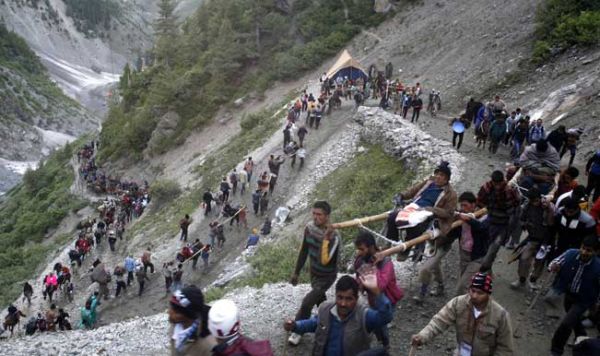By: Aditya Vashisht
Indian Prime Minister Narendra Modi’s visit to America has been garnering quite an attention. The event is significant in the fact that it is after a gap of two years that Modi is visiting the USA to attend the UN General Assembly’s session which is happening amidst a changed geopolitical landscape when seen through the lense of India. The newly developed concern with the Indo-Pacific region has made India an important partner for any country which seeks to expand its clout in this respective region and the reasons for which India stands upto are rooted in the fact of it being a nuclear power as well as an impressive military structure. But the question which should be asked is: whether India would be content to just be confined to the role of a partner and not become a big player when it comes to international politics?
In his address to the UNGA on Friday (25th Sept.), Narendra Modi spent quite a few minutes speaking about the oceans and their importance. He urged the implementation of a rules based order and the upholding of the law of the freedom of the seas. Moreover, he took a quip at the United Nations by stating that the world body was in need of reforms in order to adapt itself better with the changing scenario of the world. While it may be considered as another one of those pleas for the securing of a permanent seat in the UN Security Council, the statement is having another angle too.
As one knows that the Indo-Pacific region is slowly showing signs of becoming a place of contest. Though there isn’t a sharp bifurcation, but the Americans and the Chinese are contending with each other to secure influence in the region. And this is where India enters the scene. The USA is being seen courting India so that it could use the ancient land for its advantage and could accomplish its scheme of isolating China. But one needs to reflect whether India with all its developed might and prowess would tolerate that the Indian Ocean, which it sees as its own backyard, shall become a playing ground for the Americans and the Chinese. The answer is of course, in negative.
The Galwan valley clash of June 2020 has registered itself as an episode which may record the growing aggressiveness and assertiveness of China. India mourned the loss of 20 of its brave soldiers and anti-China sentiment among the greater part of the Indian public has been on the rise since then. After this deadly event, one might expect that the Indian P.M. would initiate a silent tirade against his neighbor and would take an active part in projects to counter the influence and power of the dragon. But it hasn’t been that. The Chinese issue is being more fueled by the media than by the Indian government, who is adopting a persistent approach to peaceful resolutions and isn’t showing any qualms to engage with the Chinese, with foreign minister S. Jaishankar tweeting the need for India and China to be at peace for maintaining ‘Asian solidarity’.
Moreover, the Indian Prime Minister has maintained the same approach with the QUAD, which he has shown in the BRICS or in the SCO. It is also important to mention that though India is having a tilt towards the USA at present, there are no entangling alliances or solidified relationships. Be it the QUAD, BRICS, SCO or the RIC, India represented by Narendra Modi plays the same role which is: an increased stress on global problems and their solving through mutual solutions. This approach in its consistency doesn’t reflect the machinations and the tensions of a superpower, although this pacifist approach has been fortified with a growing defense capability and this might be the way where India’s path to glory lies.
Modi’s recent trip to America, when taken in the above context, doesn’t seem a gamechanger, but more a part of a plan. The West isn’t strongly united at present. A division is being seen in the Atlantic between the USA on one side and European Union on the other, whose leading members are becoming increasingly skeptic about the interests and the capability of the United States.
This ensures that India’s policy towards the West is also divided on the same lines. This divide is more suitable since a united West under America would pose as great a challenge to India’s rising status as that posed by China. It is in multipolarity that India could rise and this shall also explain that why Prime Minster Modi has increased his exhortation for multilateralism. With the growth of China and Russia showing signs that it might not be sustainable, Modi’s plan of neutralism could reap benefits which may make India the ‘vishvaguru’.
Writer is student and blogger





